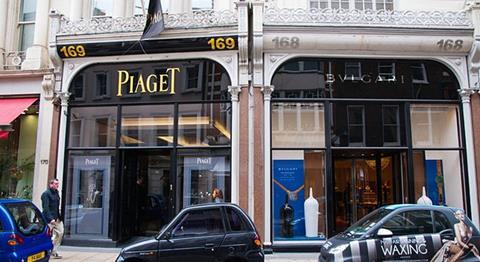As the commercial real estate sector continues to prove a robust investment platform for investors from both local and foreign markets, we continue to see yields being pushed and quality, in-demand assets becoming increasingly expensive in real terms.

The low-interest-rate environment is pushing investors to real estate as an alternative to simply leaving assets under management with private banks and insurance companies.
In recent weeks, we have seen a number of deals that highlight the trend of investing in low-yield assets. As reported by Property Week, the record for the highest capital value paid per square foot for a real estate asset in the UK was smashed twice in one week by two separate deals for jewellery stores on London’s Bond Street.
A private UK investor bought 169 New Bond Street for £65m, which equates to a capital value of £18,500/sq ft. The deal for the store broke the record set just days earlier by Hong Kong tycoon Ian Ng, who had paid more than £13,000/sq ft for billionaire Nirav Modi’s store at 31 Bond Street.
Interest rates and bond prices typically follow each other; when interest rates rise, more often than not bond yields do the same. For real estate, interest rates affect the availability and cost of capital and the demand for investment. The cost of capital influences supply and demand and ultimately can affect property prices. Investors can improve the value of their assets through efficient asset management but cannot influence the prevailing interest rate market.

Where there is uncertainty around interest rates, the increased risk premium associated with a purchase can push up the price. An increase in bond yields does not necessarily mean that real estate yields will rise, but a relationship between the two does exist. At present, interest rates seem stable and are a low-risk consideration.
However, transaction volumes slowed down in the run-up to the EU referendum, with buyers and sellers postponing decisions as they faced uncharted economic and political territory. In these circumstances, the low-interest-rate environment, while a contributing factor, was not uppermost in people’s minds.
Fantastic buying opportunities
At Mutual Finance, our clients are price sensitive, and Brexit uncertainty has presented some fantastic buying opportunities. While some people have been holding fire, others have seized opportunities to buy in a market lacking competition.
However, there is an air of expectation that both the Federal Reserve and Bank of England will move interest rates away from these current historic lows, regardless of the outcome of yesterday’s vote. Higher interest rates could pose a threat to real estate valuations in the short term, but hopefully any drop in value will be cushioned by increased rental growth and efficiencies of asset management.
Over the medium term, commercial real estate should continue giving competitive capital returns so long as the anticipated hike in interest rates is gradual. Investors should ensure they are prepared and take appropriate action via hedging and interest rate management strategies.
Irrespective of the outcome of the referendum, property yields should stay low. The question is how low can they go? And how low can we go? With prime yields for best-in-class assets often at a sub-2% net initial yield, where is the floor? Will we hit 1%? Or even enter negative territory? It’s happened elsewhere…
Raed Hanna is managing director of MFL Finance





























No comments yet